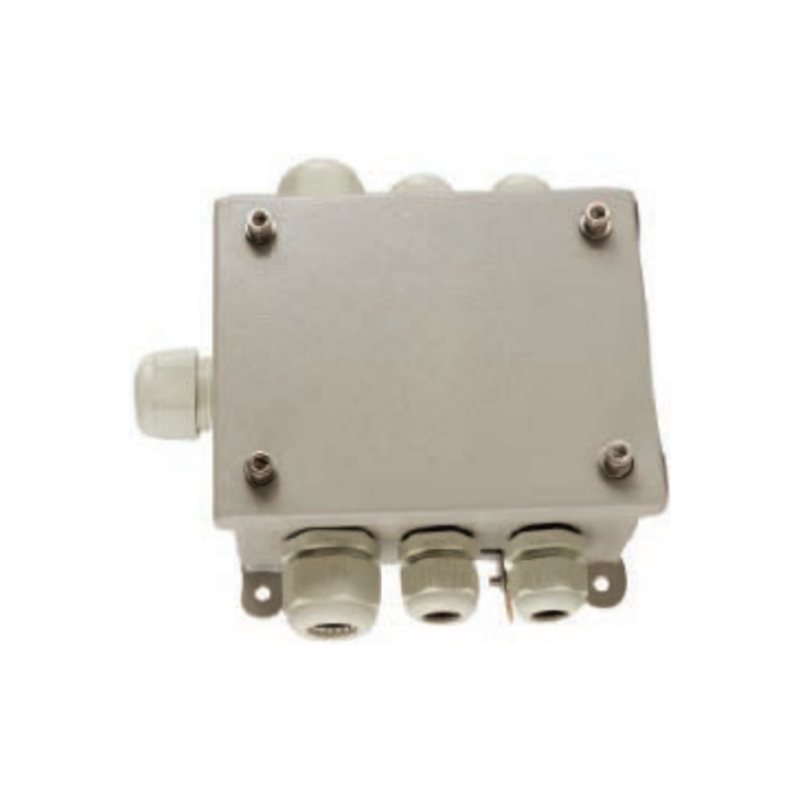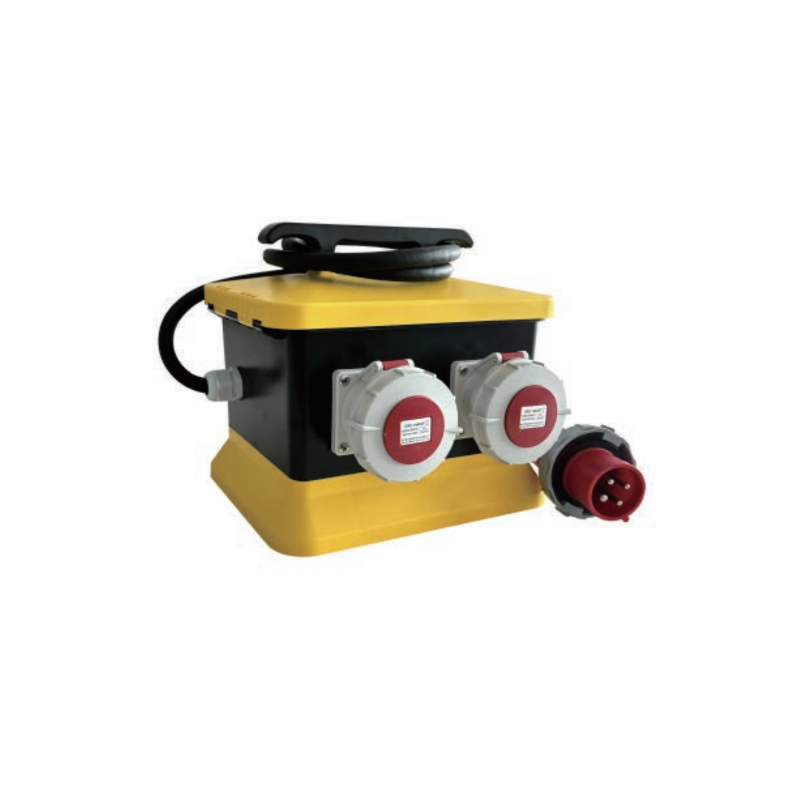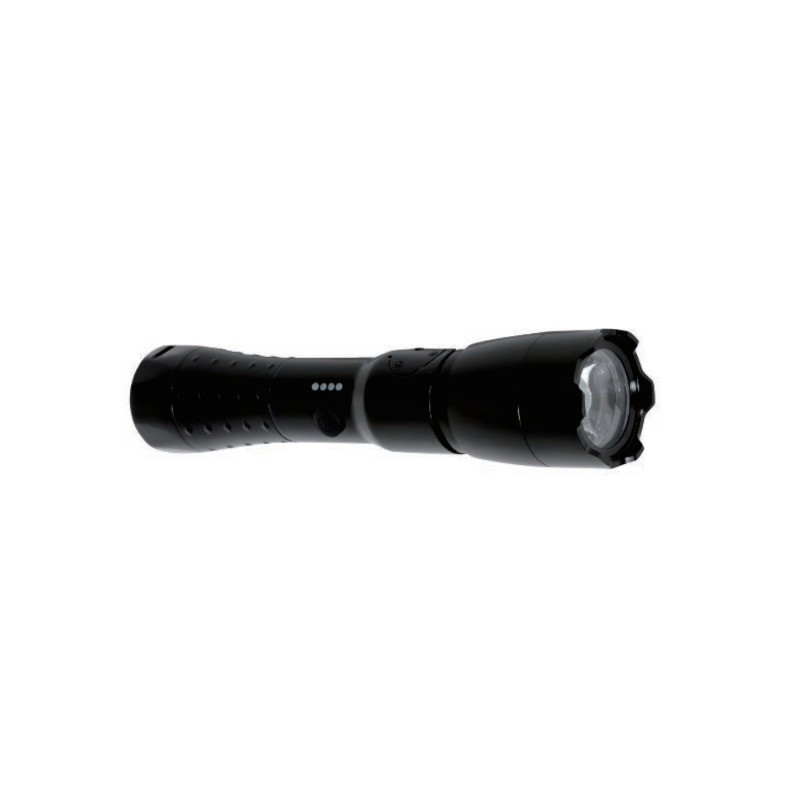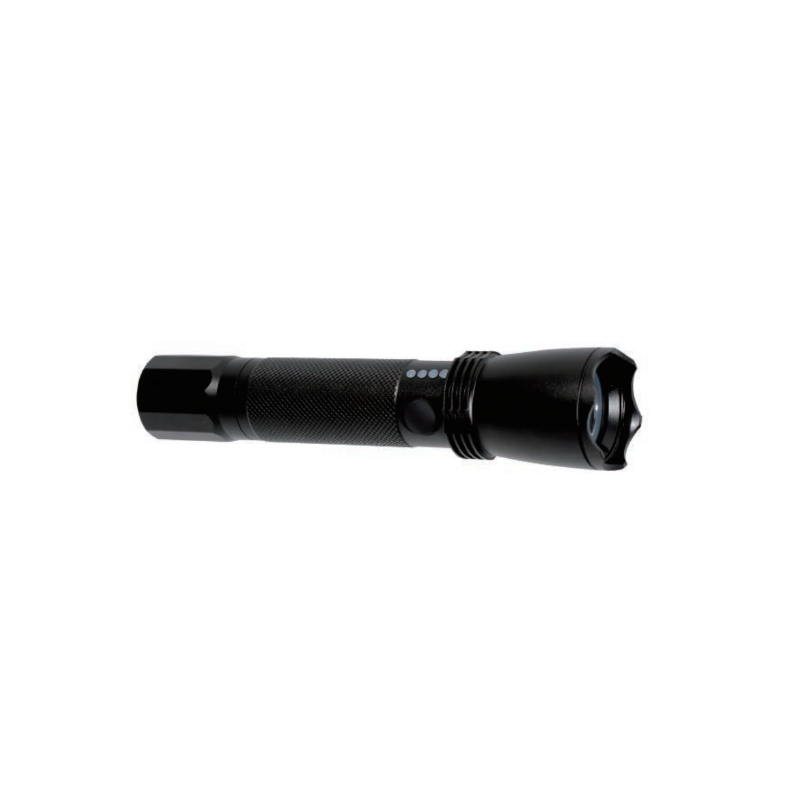Why choosing the right spotlight is crucial
In sailing activities, whether it is commercial shipping, leisure yachting or maritime search and rescue missions, choosing the right spotlight is an important factor in ensuring navigation safety at night or in low visibility conditions. A well-performing marine spotlight can provide powerful and stable light, ensuring that the crew can clearly see the front and surrounding environment, thereby avoiding collisions or getting lost in complex waters.
- Improve visibility and security
At night or in bad weather conditions, powerful spotlights can illuminate the path of the ship, helping crew members to detect floating objects, other ships or obstacles in time, effectively preventing accidents. In addition, good lighting can enhance the visibility of ships at sea, allowing other ships to identify them from a distance and take appropriate avoidance measures. - Promote efficiency and responsiveness
For ships engaged in search and rescue or special missions, powerful spotlights can not only quickly locate the location of accidents or distress signals, but also provide continuous high-quality lighting during the mission to ensure the efficiency and safety of rescue operations. In addition, spotlights can also help boaters conduct fishing operations at night or other activities that require precision operations. - Extend the service life of equipment
Choosing the right spotlight also involves considering its durability and maintenance costs. Although the initial investment of high-quality spotlights is high, they have a long service life and low failure rate, which can reduce the number of repairs and replacements and reduce the overall cost in the long run. In addition, modern LED spotlights also have better energy efficiency, can reduce energy consumption, and meet the dual needs of environmental protection and economy. - Compliance with regulations and standards
In many countries and regions, there are clear regulatory requirements for ship lighting equipment. Choosing a compliant spotlight is not only a legal requirement, but also a sign of responsibility for occupant safety. Compliant spotlights are designed and manufactured to marine safety standards to ensure reliability in a variety of environments.
Analyze the characteristics of different types of spotlights
When choosing a marine spotlight, it is important to understand the characteristics of the different types of spotlights to help select the lighting device that best suits your specific marine needs. The following is a detailed analysis of several common types of spotlights and their respective advantages and uses:
- Halogen spotlight
Features: Halogen lamps are a more traditional type of spotlight, using a halogen gas-filled bulb to generate light by heating a tungsten filament.
Advantages: lower cost, warm light, able to produce a wide range of lighting effects.
Disadvantages: higher energy consumption, high heat generation, and short bulb life. - LED spotlight
Features: LED spotlights use semiconductor materials to emit light and are the most popular type of spotlights in recent years.
Advantages: high energy efficiency, low heat generation, low maintenance costs, long service life, and good earthquake resistance.
Disadvantages: The initial investment cost is relatively high. - HID (High Intensity Discharge) Spotlight
Features: HID lamps produce light through gas discharge, and common types include xenon lamps.
Advantages: high light efficiency, high light brightness, suitable for occasions requiring long-distance lighting.
Disadvantages: Long start-up time, higher cost, may require additional maintenance. - Xenon spotlight
Features: A special type of HID lamp that uses xenon as the luminescent material.
Advantages: The light is very bright and clear, and the color temperature is close to natural light.
Disadvantages: high cost, complex installation, and maintenance requiring professional skills. - Fiber optic spotlight
Features: Light is transmitted through optical fiber, and the light source can be far away from the actual location of use.
Advantages: High flexibility, can provide lighting in locations where it is inconvenient to install traditional lamps.
Disadvantages: The system is complex and costly, and may require professional installation and maintenance. - Laser spotlight
Features: Uses laser technology to produce a high-intensity focused beam.
Advantages: High light concentration, long irradiation distance, and high accuracy.
Disadvantages: High technical requirements, expensive, and safe operation requires special attention.
Different types of spotlights have their own unique characteristics and applicable scenarios. The actual navigation needs, budget and expected use environment should be considered when selecting to ensure that the purchased spotlight can effectively meet navigation safety and operational needs. For example, for vessels that frequently sail at night or in low-visibility environments, LED or xenon spotlights may be a better choice because they provide long-life and high-brightness lighting.
How many lumens do I need for a marine spotlight?
The number of lumens required for a marine spotlight, that is, the light output of the fixture, depends on a variety of factors, including the size of the vessel, the intended use environment and the specific use. Here are some basic guidelines and considerations to help determine the appropriate number of lumens:
- Size and purpose of vessel
Small boats (such as recreational fishing boats): May need a lower lumen count, somewhere between 1,000 and 2,000 lumens, for basic navigation and close-range lighting.
Medium-sized vessels (such as lifeboats or medium-sized yachts): Lumen requirements may range from 2,000 to 5,000 lumens to ensure adequate lighting to cover a wider area.
Large vessels (such as cargo ships or large cruise ships): May require up to 10,000 lumens or more to provide sufficient lighting intensity for safe operation in complex or low-visibility environments. - Intended usage environment
Open Ocean: A higher lumen spotlight may be required to ensure adequate visibility and safety over long distances.
Inland Waterways and Narrow Channels: A lower lumen spotlight may be sufficient because the line of sight is typically closer and a smaller lighting range is required. - Needs for specific activities
Night sailing: A higher lumen spotlight is required to ensure long-distance visibility and avoid obstacles.
Search and rescue operations: Very high lumen output may be required to quickly locate and operate during emergency situations.
Recreational activities (such as night fishing): May have lower lumen requirements and are mainly used to create a comfortable and functional lighting environment.
What is the difference between floodlights and spotlights on a boat?
Although floodlights and IMPA 791801 Steel Flanged Marine Spotlight on ships are both lighting equipment, their design purposes and usage scenarios are significantly different:
Spotlight
Spotlights are designed to produce a highly concentrated beam of light that can illuminate a specific area over a long distance. Their main features include:
- Concentrated beam: The beam produced by the spotlight is very concentrated and can be focused on a smaller area to provide intense illumination.
- Long-distance lighting: Due to the highly concentrated beam, spotlights are ideal for long-distance lighting, such as navigation, searching, or marking distant objects.
- Specific Use: Typically used during night navigation to highlight obstacles, other vessels or shorelines at sea.
Floodlight
Floodlights are designed to broadly illuminate a large area, with their beams dispersed rather than concentrated. Their main features include:
- Beam dispersion: Floodlights provide a broad beam that can cover a large area of space and distribute light evenly.
- Close-range lighting: Due to the spread of the beam, floodlights are better suited for illuminating large areas around the ship, such as decks, holds or workplaces.
- Versatility: Often used for task lighting, security lighting, or during nighttime activities to provide enough light for people to work and move safely.

The importance of correct installation and maintenance of marine spotlights
Proper installation and maintenance of marine spotlights is critical to ensuring vessel safety, increasing productivity, and extending the life of your equipment. This topic is explored in detail below:
Importance of installation
- Ensuring Performance: Properly installed marine spotlights ensure optimal performance of the fixture, including maximum lighting effect and correct beam direction. Improper installation may lead to inaccurate light illumination, affecting navigation safety and night operation efficiency.
- Increased durability: Good installation reduces the shaking of the lamp in harsh offshore environments, which can reduce wear and tear and extend the service life of the spotlight. Proper mounting and positioning can protect spotlights from wind, waves and salt spray.
- Comply with safety standards: Compliant installation also includes ensuring that all electrical connections comply with marine electrical safety standards, preventing the risk of short circuits or fires and ensuring the safety of the vessel and crew.
Importance of maintenance
- Maintain optimal performance: Regular maintenance ensures your spotlights are always in top working order. This includes cleaning light fixtures, inspecting bulbs and reflectors, and ensuring all electrical connections are secure and functional.
- Prevent failures: With regular inspections and maintenance, potential problems such as corrosion, loose connections, or damaged components can be detected and resolved early, before failure occurs at critical moments.
- Extended equipment life: Proper maintenance not only ensures the performance of your spotlights but also extends their service life, thereby reducing replacement frequency and associated costs.
Implementation suggestions
Installation steps
- Choose the right location: Make sure the spotlight is installed in a location on the vessel that maximizes its lighting effect without creating glare for the operator.
- Use the right fixings: Choose corrosion-resistant materials, such as stainless steel screws, to ensure your spotlights stay securely mounted even in inclement weather.
- Ensure electrical safety: Carry out electrical installations in accordance with manufacturer’s guidance and international standards, using suitable waterproof and corrosion-resistant wires and connections.
Maintenance steps
- Regular cleaning: Clean the lampshade and reflector regularly to keep the light clear and bright.
- Check circuits and connections: Check all wires and connections to make sure there is no corrosion or wear.
- Check and replace light bulbs: Check light bulbs regularly and replace them when necessary to maintain light efficiency and quality.
Safety Precautions: Safety Measures When Using Spotlights
When using IMPA 791801 Steel Flanged Marine Spotlight, it is crucial to take the correct safety measures, not only to protect the equipment itself, but also to ensure the safety of the crew and vessel. Here are some key safety considerations:
- Avoid looking directly at the light source
The light produced by spotlights, especially high-lumen lamps, is very intense, and direct viewing may cause temporary or permanent damage to the eyes. When using a spotlight, avoid pointing it directly into people’s eyes, especially at close ranges. - Avoid overheating of spotlights
Although many modern spotlights, such as LEDs, emit low amounts of heat, some traditional types, such as halogen lamps, can generate significant amounts of heat. Make sure the spotlight has proper ventilation to avoid overheating, and check regularly to make sure the cooling system is working properly. - Ensure electrical safety
- Waterproof and moisture-proof: Since spotlights are usually used outdoors and are often exposed to water, ensure that all electrical connections have good waterproof properties to prevent moisture intrusion and short circuits.
- Check your wires regularly: Check all wires and connections to make sure there are no exposed wires and avoid using wires that are frayed or damaged.
- Use appropriate mounting equipment
Use mounting fixtures designed for offshore environments, such as stainless steel screws and brackets, to prevent equipment from falling or being damaged due to corrosion or loosening. - Operation training
Ensure that all crew members operating spotlights are properly trained on how to use them safely, including the correct method of turning the equipment on, adjusting and turning off the equipment. - Emergency shutdown measures
Make sure your spotlights are equipped with an easily accessible emergency stop switch or feature so that power can be cut off quickly if a problem occurs to avoid creating a greater safety risk. - Light pollution considerations
Minimize the impact on the environment when using spotlights and avoid unnecessary light pollution, especially when using spotlights near residential areas or sensitive ecological areas. - Comply with regulations and standards
Ensure that all spotlight equipment and installations comply with the requirements of the International Maritime Organization (IMO) or local maritime safety regulations, which may specify minimum and maximum standards for lighting equipment.
Potential uses of spotlights in the shipping industry
IMPA 791801 Steel Flanged Marine Spotlight bring innovative potential applications to the shipping industry by integrating advanced sensors, automatic control systems and network communication technologies. The fusion of these technologies not only improves the functionality of the spotlight, but also greatly enhances navigational safety and efficiency. Here are some potential uses of smart spotlights in the shipping industry:
- Automatic tracking and positioning system
Smart spotlights can integrate motion sensors and GPS systems to automatically track and illuminate specific targets, such as passing ships, marine life-saving facilities or personnel. This automatic tracking function is particularly suitable for search and rescue operations, which can quickly and accurately locate objects in need of assistance, even in severe weather conditions. - Augmented reality auxiliary lighting
Combined with augmented reality (AR) technology, smart spotlights can automatically adjust the lighting range and intensity based on data from the ship’s navigation system to optimize navigation conditions at night or with low visibility. For example, in dense fog, smart spotlights can enhance lighting in specific directions to help crews better identify obstacles ahead. - Ship safety monitoring
Smart spotlights can be integrated with a ship’s video surveillance system, providing the necessary lighting to enhance video clarity and coverage at night or in low-light conditions. This can more effectively monitor the security situation around the ship and detect and respond to potential security threats in a timely manner. - Adaptive energy management
In terms of energy efficiency, smart spotlights can automatically adjust output power according to ambient light conditions, optimize energy use, and reduce energy consumption. This is especially important for vessels sailing long distances, helping to extend battery life and reduce maintenance requirements. - Fault diagnosis and remote maintenance
By integrating network communication technology, smart spotlights can transmit their performance and status data to ship management systems or remote monitoring centers in real time. This allows marine engineers to promptly diagnose any faults and perform necessary maintenance, sometimes even solving problems remotely, reducing downtime and repair costs. - Environmental adaptability
The smart spotlight can also automatically adjust the lighting mode according to weather conditions and sea conditions, such as reducing the lighting intensity to reduce glare when the sea surface is highly reflective, or increasing the lighting intensity to improve visibility in foggy days.
When choosing a marine spotlight, it is recommended to choose based on specific needs and application scenarios. Generally speaking, the lumen count of a spotlight should be sufficient for safe navigation in the worst sight conditions. If possible, it’s best to consult the manufacturer or a professional for recommendations for your specific boat and use. In addition, choosing the appropriate lumen output and beam angle is also very important considering energy efficiency and light pollution.






